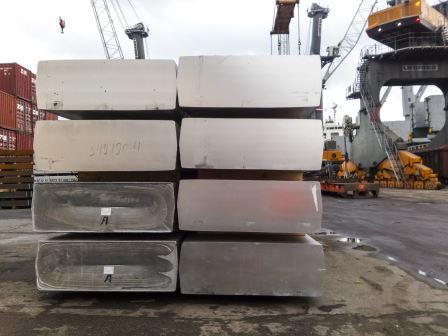
Concerns over trade war between the world’s leading economies have resulted in wide swings in the global financial and commodity market. The U.S imposed multi-million worth tariff on several goods being imported from China in the last week and the later retaliated by levying tariff on American products. The U.S administration levied tariffs on metal imports from Europe, Canada and Mexico too.
The U.S President Donald Trump laid the stones for the trade war by imposing tariffs on Chinese products, claiming that the country unfairly transfer American technology and intellectual properly that are alarming for American jobs. American exports to China that will be most affected by the tariff are vehicles, aircrafts, vegetables, plastics and chemicals. Meanwhile, heavy equipment like machinery, mechanical appliance and electrical goods are likely to be affected on the Chinese side. In the meantime, the U.S business community are against the decision to impose trade tariffs. Washington’s largest lobbying groups has already warned that the proposal to impose tariffs would destruct U.S manufactures, farmers and consumers. IMF too has warned that trade war would lead to losses on both sides and will leave severe impact on economy, though the two countries continued challenging each other.
The trade war worries were initially triggered in March after the U.S planned to impose tariffs on steel and aluminium imports. However, global commodity prices had a mixed response to the news. Steel prices weakened initially, but strongly recovered later, especially in the key Chinese market. On the domestic side, tariff impact on domestic steel manufactures were limited as our exports to U.S is negligible. The U.S import steel largely from Canada and Brazil. At the same time, wide swings were seen in global Aluminium prices. Same trend was seen other base metals as well.
Bullion reacted positively towards the news due to its safe haven appeal. However, prices corrected later on reports of subsiding worries, a strong dollar and the US FOMC meeting outcome. The already elevated crude oil prices had a muted immediate response, continuing its positive momentum. However, oil prices retreated from the multi-month peaks later and are now consolidating with looming worries over the possibility of China imposing tariffs on US crude oil as well as outcome of OPEC bi-annual meeting. China have now proposed to limit import of U.S energy products like Crude oil, LNG and coal. China is the largest customer of U.S crude, importing about 319,000 bpd since January. The country is the priority customer for ballooning U.S shale industry. Blocking U.S oil to China will create trouble for the U.S shale producers as it is difficult to find new customers. China can sources oil and energy products from other countries like Russia and Saudi even though they had to pay more.
The US dollar gathering momentum after the imposition of tariffs to affected the commodity prices. The greenback rose more than seven percent after the U.S administration’s decided to impose tariffs on imports. A strong dollar usually make commodity price feeble.
Looking ahead, the tensions may flare up further as the U.S plan to restrict Chinese investments into the country. Various reports suggest that the U.S plans is planning to expand tariff on more Chinese goods in the coming days. As long as worries over trade spat between the counties exist, commodity prices likely to be vulnerable, with the U.S and China being the top global economies and leading consumers of a large number of commodities.
Posted: June 2018









mr.VK vijayakumar give Best advice through articles many times in tuff time.I appritiate it.Redness pay me eaverytime in longterm.Thanks.